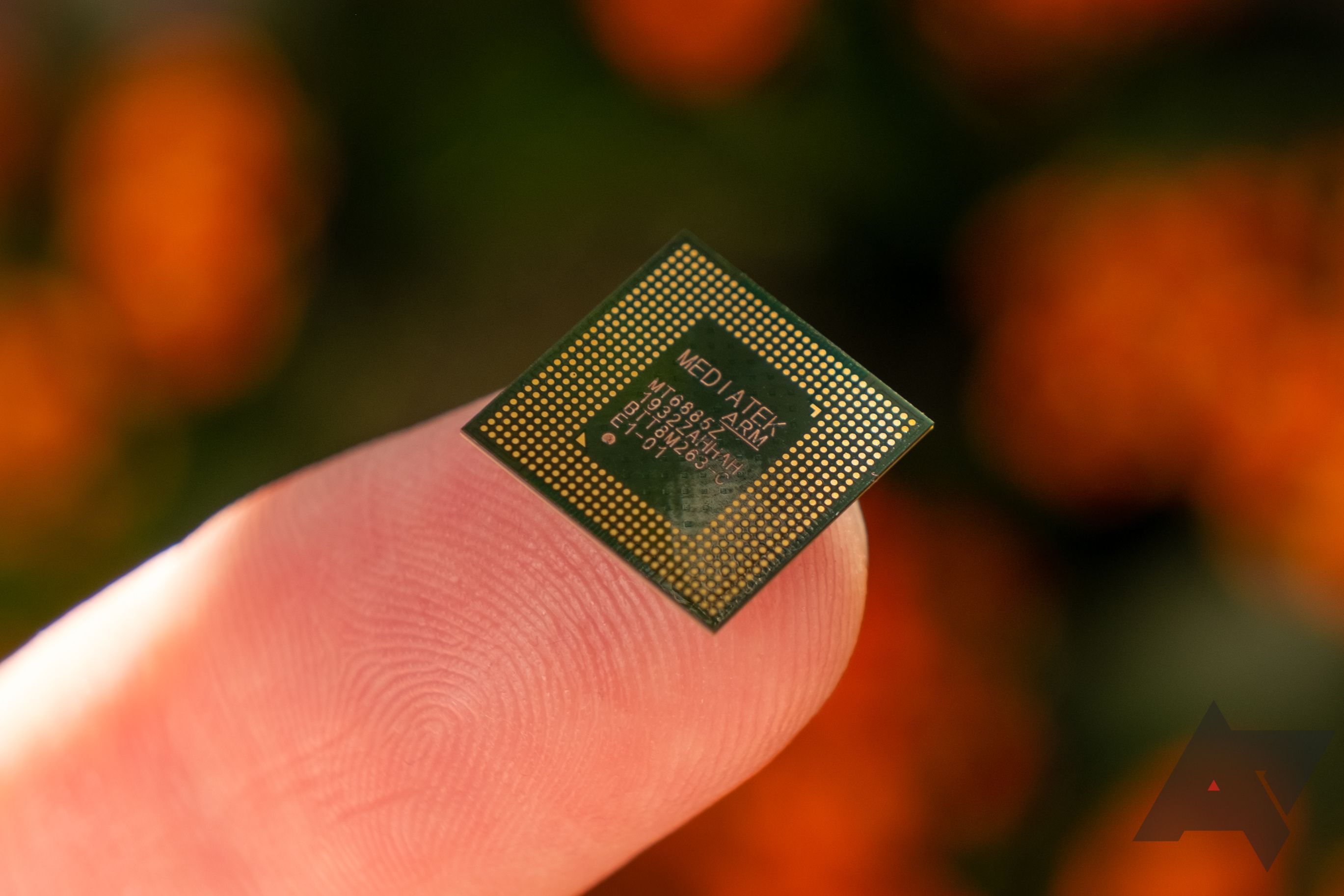Today MediaTek has formally revealed its latest mobile chipset, which packs an integrated 5G modem, 8-core design, and Wi-Fi 6 support, kicking off an all new "Dimensity" family of silicon. On paper, the latest Dimensity 1000 sounds like the first 5G-integrated chip MediaTek announced back in May of this year. But whether this is a rehash of that or not, there is one big twist this time around: MediaTek tells us we'll see phones running this new SoC land here in the USA.
Full disclosure: As part of this announcement earlier this month, MediaTek flew me and dozens of other bloggers/reporters/analysts/content creators to San Diego for three days, booked us all into the 'Del, and sang me happy birthday at a surprise beachside party (I kid you not). I died of embarrassment, but the cake was good.
Between the official press release and the details revealed to us at the executive summit, the full and very technical specs for the "Dimensity 1000" 5G-integrated chipset are as follows:
SPECS
|
CPU cores |
4x 'big' A77 at up to 2.6GHz, 4x 'small' A55 at up to 2.0GHz |
|
GPU |
9-core Mali G77 |
|
Modem |
5G SA/NSA, NR TDD and FDD, 2CC CA, 4.7Gbps downlink and 2.5Gbps uplink at sub-6 frequencies, fallback for 2G, 3G, 4G (Cat 16 LTE), VoNR |
|
Connectivity |
Wi-Fi 6 (2x2 MIMO), Bluetooth 5.1 |
|
Node |
7nm TSMC |
|
Memory |
4-channel LPDDR4X, up to 16GB |
|
Display |
Up to QHD+ 90Hz or Full HD+ 120Hz, DisplayPort support |
|
Camera |
5-core ISP; up to 80MP at 24FPS single-camera, or 32MP+16MP dual camera; multi-frame video HDR; up to 4K video at 60fps in H.264/265/VP9 |
|
Misc. |
6-core APU for AI workloads (2x big, 3x little, 1x tiny cores), 5G+5G and 5G+4G dual-SIM support, dual-core audio DSP |
In short, these specs generally match the unnamed 5G SoC initially revealed earlier this year, down to the rated uplink/downlink speeds and the originally anticipated availability date, though there are some new details like the "world's first" multi-frame HDR video support, Wi-Fi 6, 120/90Hz display support, 4K 60FPS AV1 decoding support — among other more minor features.
The 5G elephant in the room for MediaTek's Dimensity 1000 is its lack of mmWave support — the high-frequency 5G solution most US carriers are trying to push. This chip's modem is made for sub-6GHz applications of 5G standards, the so-called mid- and low-band frequencies like that AT&T recently converted to 5G, and which T-Mobile is ready to light for the OnePlus 7T Pro 5G McLaren. Outside the US, most carriers are focusing on mid-band solutions for initial 5G rollouts with mmWave support to follow. Although the US carriers' infatuation with mmWave limits the Dimensity 1000's 5G practical applications here until we get more/better mid-band 5G options, it can still fall back to 4G at Category 16 speeds (~gigabit down and 150 Mbps up at max).
The real chip (pictured up at the top) had a lot more writing than this on it.
MediaTek skipped out on supplying us with benchmarks — the standard filler for these sort of hardware announcements — but at our briefing, the company claimed this chip should offer double the download and upload speeds at sub-6 applications compared to Qualcomm's (now older) Snapdragon X50 modem, paired with 42-48% less power consumption. Non-final benchmarks provided at the event itself placed general performance at the flagship level, competitive in at least a few cherry-picked tests with Qualcomm's soon-to-be-last-gen Snapdragon 855. That increased performance will also come with a higher price tag for MediaTek's customers. Although it won't give us specifics, we're told the Dimensity 1000 will cost more for device manufacturers to use than previous 4G LTE chips.
Knowing MediaTek, any comparison to Qualcomm's flagship chips is probably wishful thinking, but we could be surprised. Better, we may have the actual opportunity to experience that surprise, as the company says that we'll see this product manifest in phones coming to the US. While Asian markets will see devices first, starting as early as the first quarter of next year, we'll see it in products landing stateside in the second half of 2020.
For many of our readers, the MediaTek name might bring to mind disappointing low-end tablets and phones, but the company was quick to point out at our briefing the plethora of other devices it silently powers, from budget smart speakers all the way to multi-thousand dollar Peloton bikes. Hopefully, the Dimensity 1000 lives up to the company's lofty flagship-level goals, because it would be great if someone could disrupt Qualcomm's effective monopoly on the high-end market here in the US. I'm not holding my breath, but it would be nice to see.

